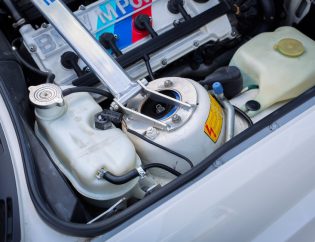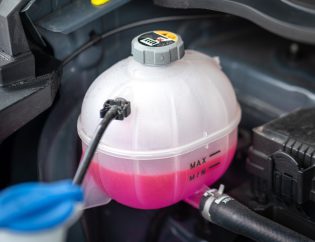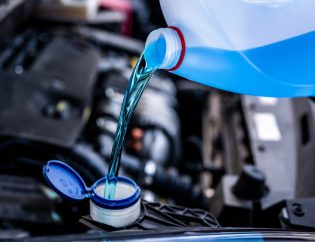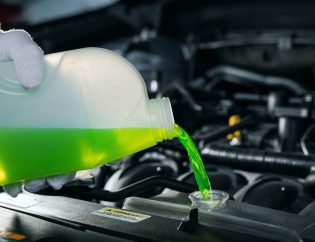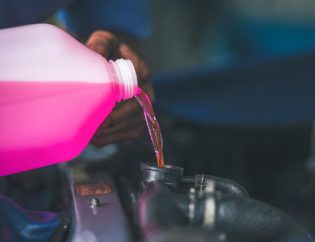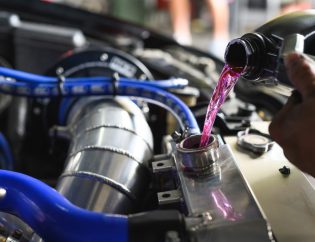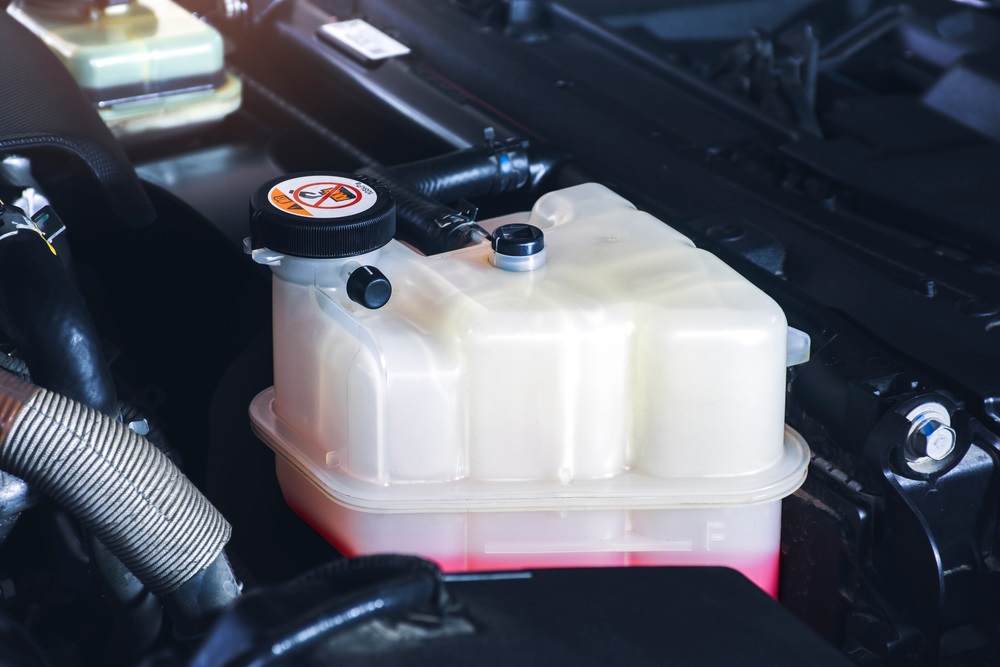
Common symptoms of a leaking coolant reservoir include:
- Visible coolant dripping from the reservoir or under the car
- An overheating engine due to insufficient coolant
- Steam rising from the hood and overflowing coolant
- The smell of sugary coolant from the leak
These symptoms indicate it’s time to diagnose and repair the leak before it leads to more severe engine overheating and damage. A proper fix usually involves replacing the leaking reservoir or sealing any cracks and leaks. Understanding the source and fixing it promptly reduces the chances of repeat leaks. Learn more in this blog post by Azure Chemical.
Contents
Visible Leaks
One of the most obvious signs of a leaking coolant reservoir is visible leaks around the reservoir itself. This may present itself in a few ways:
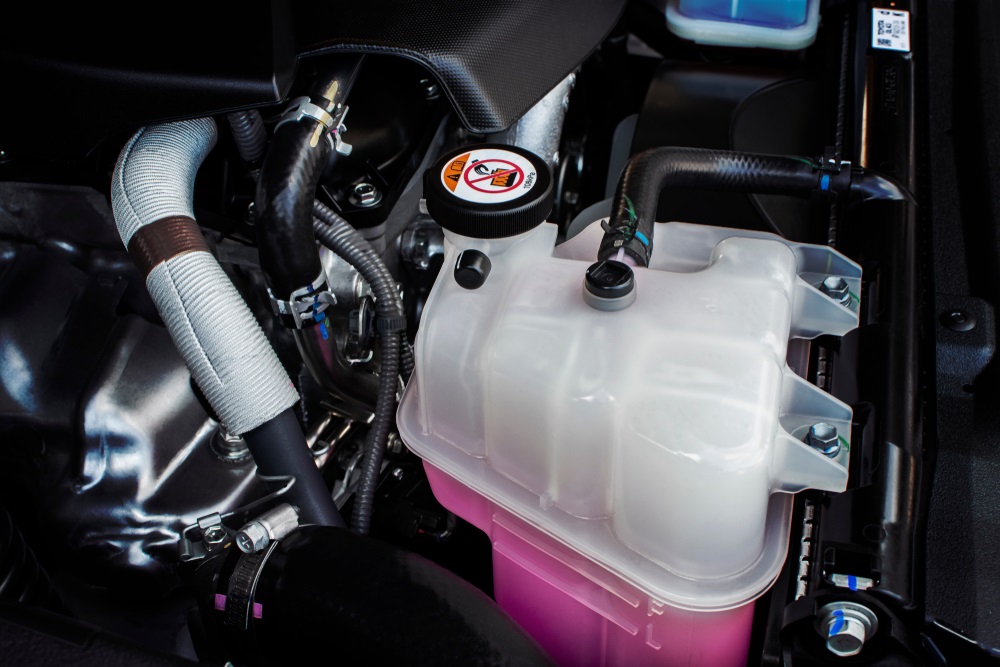
Puddles of Coolant Under the Car
If you notice green or orange liquid underneath your vehicle, it likely indicates the reservoir is leaking fluid. Coolant drips out and forms puddles on the ground as it leaks. Check under the front end where the reservoir is located.
Stains Around the Reservoir Cap
Look where the cap attaches. If you notice dried coolant stains or crusting around the cap, seams, and connections, it shows where the fluid is leaking out.
Low Coolant Levels
Check the reservoir while the engine is cold, and look at the minimum and maximum level indicators on the side. If the coolant is below the minimum line, the system has likely lost fluid due to a leak. Opening the cap and looking inside will reveal how much coolant remains.
Always address visible leaks as soon as possible, as losing too much coolant can lead to overheating, engine damage, and more extensive repairs. Check for puddles, stains, and decreasing fluid levels to identify if your coolant reservoir has a leak issue.
Overheating Engine
The coolant reservoir holds excess coolant circulating through the engine to prevent overheating. If the reservoir develops a leak, it can’t properly hold the extra coolant, which causes the engine to overheat.
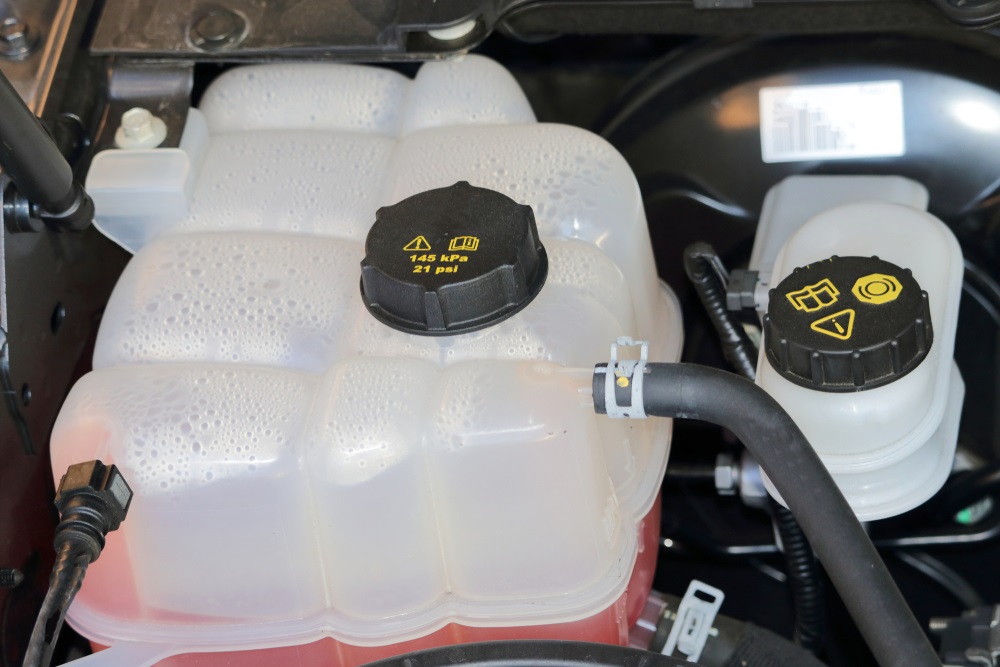
When the coolant level gets too low due to a leak, it can’t properly regulate the engine’s temperature. If left unaddressed, the engine will start overheating, potentially causing serious internal engine damage. Catching a leaking coolant reservoir quickly is important to avoid an overheating situation.
Steam From Hood
One of the most noticeable signs of a leaking coolant reservoir is steam billowing from under the hood.
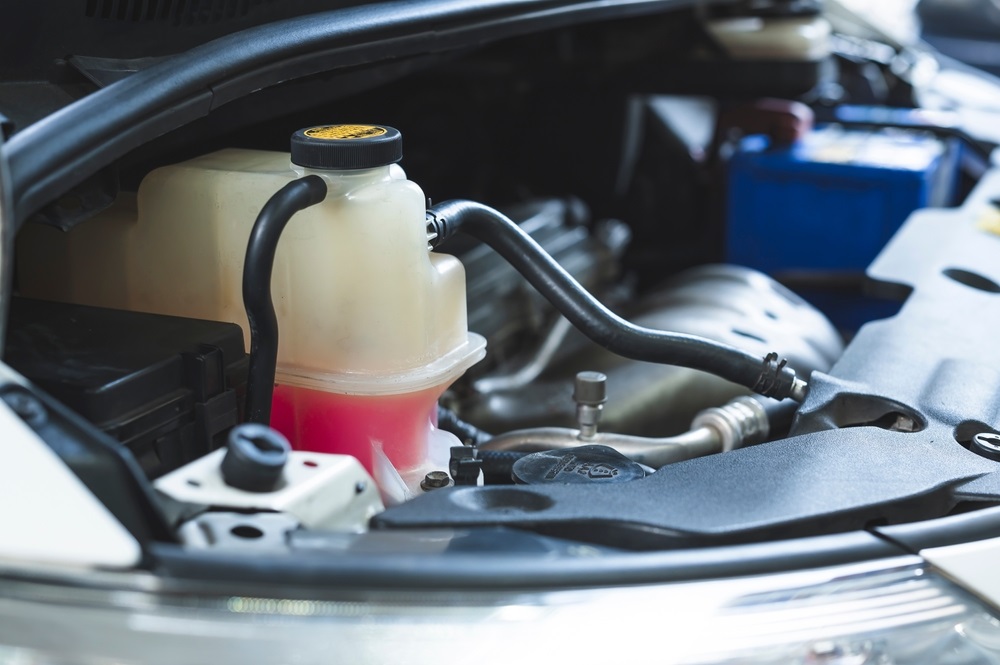
This typically occurs after the engine fully warms up while idling at a stop light or driving down the road. The steam is from coolant leaking onto hot engine components and instantly vaporizing.
Seeing steam come out from under the hood indicates the engine is seriously overheating. If the overheating engine is not quickly rectified, it might result in severe engine damage. When you notice steam, safely pull over and shut off the engine immediately.
Do not open the hood immediately, as the steam and components will be extremely hot. Wait for the engine to cool down before inspecting for the source of the leak. When opening the hood, use caution around any remaining steam or hot engine components.
The coolant reservoir is likely cracked or has a loose cap if steam comes from that general area under the hood. Visually inspect the reservoir and hoses leading to and from it. Look for any white, dried coolant residue as a clue to pinpoint the leak location.
Steam billowing from under the hood means you should only drive the vehicle further once the overheating and coolant leak is addressed. Be prepared to have the vehicle towed if needed. Take preventative action by replacing aging coolant reservoirs. Addressing small leaks early can help avoid catastrophic engine failure down the road.
Coolant Odor
A sweet, unusual odor that smells faintly like maple syrup or burnt caramel is a telltale sign of an engine coolant leak.
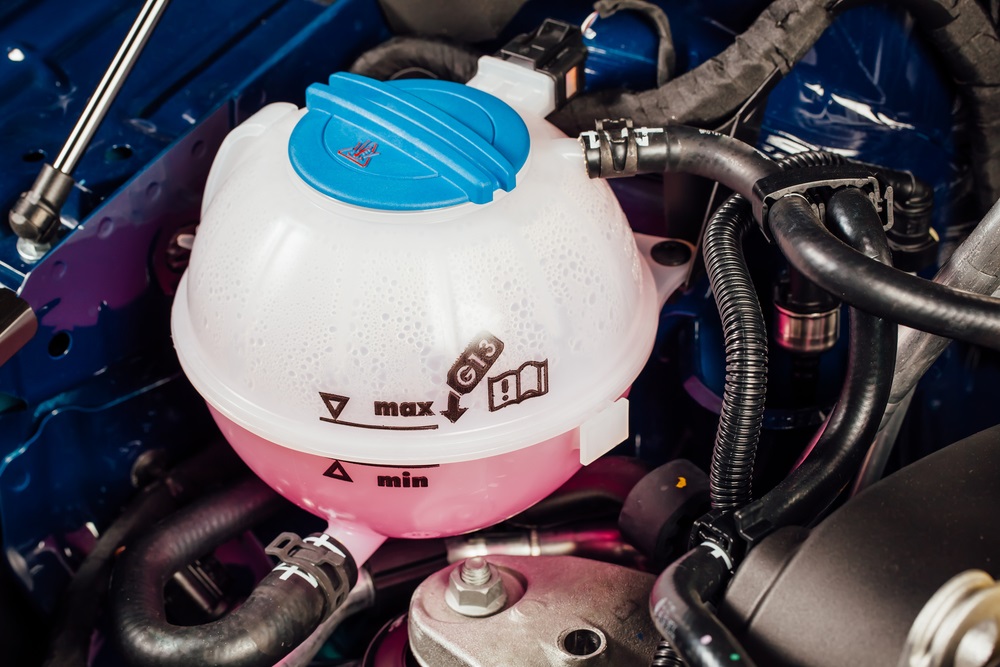
This scent comes from ethylene glycol, the main ingredient in most engine coolant formulas.
Coolant leaks from the reservoir or hoses can produce noticeable odors inside and outside the vehicle. Inside the car, a sweet scent may waft through the vents when the heater or air conditioner is running. You may notice the sweet smell around the engine bay or near the front tires when parked outside the vehicle.
Sniff first near the coolant reservoir and radiator cap when troubleshooting a coolant odor. Coolant dried on the caps or engine parts can give off that sweet maple syrup aroma long after the leak stops. Any leaks need to be fixed right away because a large coolant loss might cause the engine to overheat and sustain serious damage.
Diagnosing the Leak
Examining the complete cooling system visually is the first step in identifying a coolant leak.
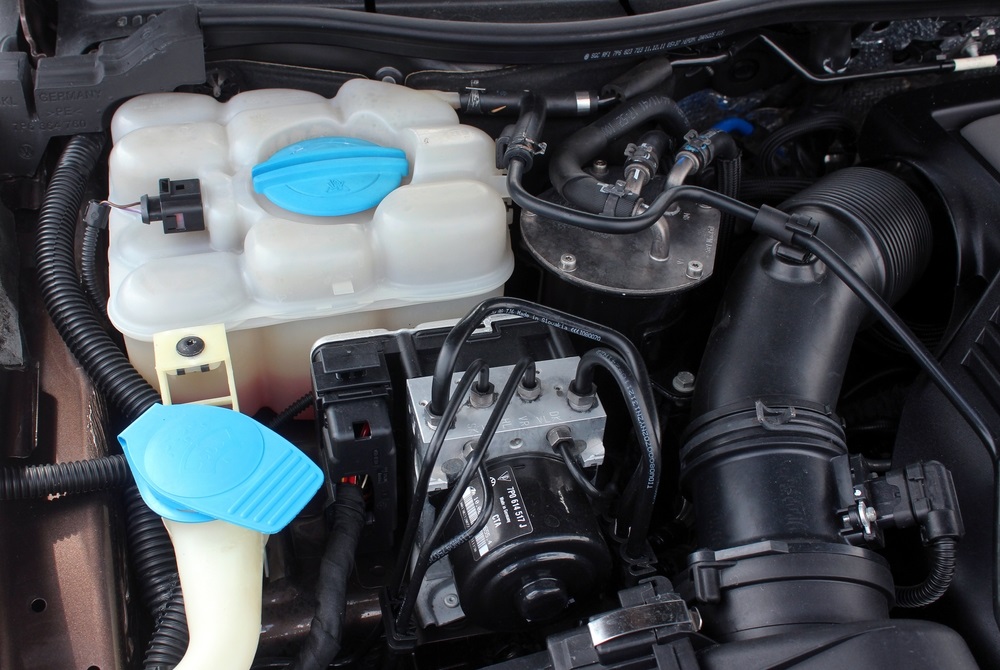
Look along hoses, radiator seams, water pump, reservoir, and thermostat housing for any obvious wetness or stains from leaking coolant.
If no external leaks are visible, the next step is to pressure test the cooling system. This involves using a pressure tester to pressurize the system and inspect for any pressure drops over time, indicating a leak. Often, hairline cracks are invisible to the naked eye.
Another method is to use a dye test. A special fluorescent dye is added to the coolant. The system is run for some time and inspected under a black light. Any leaks will glow brightly under the black light and pinpoint the source. The dye test is useful for finding internal leaks that aren’t visible outside.
The source of most coolant leaks can be identified by combining close visual inspection, pressure testing, and a dye test. Once the leak is found, the appropriate fix can be determined: tightening a connection, replacing a hose, or repairing a component. Accurately diagnosing the leak is key before attempting any repairs.
Fixing a Plastic Reservoir
Cracks in the plastic usually cause a leaking plastic coolant reservoir due to age and heat cycles. There are a couple of options for repairing a leaking plastic reservoir:
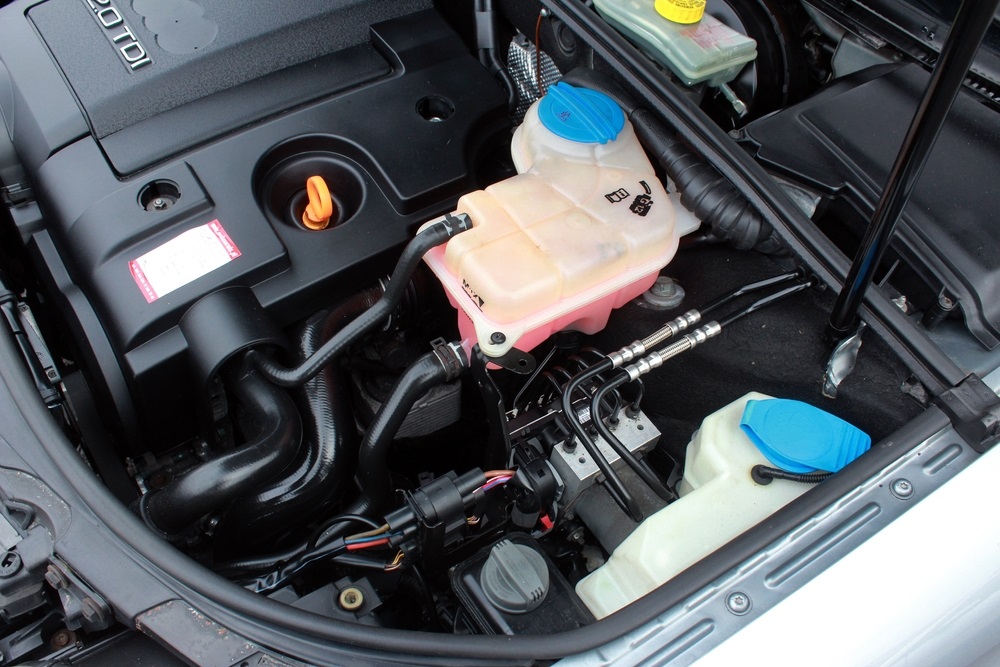
Repairing Cracks
For small cracks and holes in the plastic, apply a plastic epoxy resin or Seal n Flex to patch the leak. Ensure the reservoir is empty, clean, and dry before applying the epoxy. Follow the product instructions for curing time before refilling the reservoir. This can be a temporary fix, but it may take time before replacing the whole tank.
Replacing the Tank
If the cracks or damage are too large to patch, you’ll likely need to replace the entire plastic coolant reservoir. You can purchase a replacement plastic tank for your vehicle make and model at most auto parts stores or online. Locate and disconnect the hoses to the old tank and drain any remaining coolant. Unscrew the old reservoir and remove it. Install the new tank with fresh hose clamps, refill it with coolant, and bleed the cooling system. Be sure to check for leaks. With a new tank, you should be leak-free for some time before plastic aging becomes an issue again.
Fixing a Metal Reservoir
One common issue with metal coolant reservoirs is that they can develop cracks and leaks over time. Fixing a cracked metal reservoir is sometimes possible but often requires replacing the reservoir completely.
Soldering Cracks
If the metal reservoir has a small crack or hole, soldering may repair it. This entails washing and drying the area completely, then filling in the crack with solder using a soldering iron. Be sure to use solder suitable for automotive or radiator repair. Once cooled, the soldered area can be smoothed down and sealed with high-temperature silicone or epoxy.
While this approach can work for minor leaks, it’s generally not recommended for large cracks or damage. The repair may not hold well with the pressure and temperature changes in the cooling system.
Replacing the Reservoir
Replacing the coolant reservoir is the best option for larger cracks or extensive damage. Metal coolant reservoirs are often found online or at auto parts stores as direct replacement parts. Ensure you get the correct part for your vehicle’s make, model, and year.
Replacing a metal reservoir involves:
- Draining the cooling system.
- Disconnecting all hoses and fittings.
- Removing the old reservoir.
- Installing the new one.
Use fresh coolant, and bleed any air out of the system. Take care not to spill or splash any coolant during the repair.
With a new reservoir installed, inspect all hoses and clamps to prevent future leaks. Proper cooling system maintenance can help prevent cracks and damage from occurring in the first place.
Preventing Future Leaks
Regular maintenance is key to preventing future coolant leaks.

Follow the manufacturer’s recommended service schedule and have a professional inspect all cooling system components. You can save costly repairs and inconveniences by replacing worn-out parts before they fail.
When it does come time to replace the coolant reservoir or associated hoses and fittings, always opt for OEM or high-quality aftermarket parts. Cheaper components often take time to succeed. Properly installing new parts according to specifications will give them the best chance at a long service life.
Lastly, avoid physical damage to the coolant reservoir and attached hoses. Plastic reservoirs can crack if struck by road debris, so check that protective shields are in place. Avoid resting tools or materials on the reservoir when working under the hood. Secure all hoses tightly to avoid vibration damage. Give the reservoir and hoses a visual inspection with each oil change or servicing to spot any emerging cracks early.
Frequently Asked Questions
What Are the Common Symptoms of a Leaking Coolant Reservoir?
Visible coolant leaks under the vehicle, an overheated engine, a consistently low coolant level, and a coolant warning light on the dashboard are common symptoms.
How Can I Tell if My Coolant Reservoir Is Cracked?
Physical damage such as cracks or splits on the reservoir’s surface, often accompanied by a white or colored residue indicating dried coolant, are signs of a crack.
Is It Safe to Drive with a Leaking Coolant Reservoir?
No, it is not safe. Driving with a leaking coolant reservoir can lead to engine overheating and serious damage. Repairing the leak before extensive driving is advised.
What Causes a Coolant Reservoir to Leak?
Cracks in the reservoir, loose or damaged hoses, a faulty radiator cap, or wear and tear over time can cause leaks.
Conclusion
If you have tried the DIY troubleshooting steps but are still experiencing major leaks or overheating, it is time to seek help from a professional auto mechanic. Major leaks that cause the reservoir to drain quickly or overheating that continues despite adding coolant indicate a serious problem.
Some signs it’s time to take your vehicle to the auto shop include:
- There is a constant need to refill the coolant reservoir within a short timeframe, such as every couple of days or once a week. This points to a major leak that is unlikely to be fixed with a simple hose clamp or gasket replacement.
- Overheating that continues even after topping off the coolant reservoir. This suggests a larger issue, like a problem with the radiator, water pump, thermostat, or head gasket. These require professional expertise to diagnose and repair.
- Excessive amounts of coolant on the ground under your vehicle. Puddles of green or yellow fluid indicate a major leak that needs a mechanical fix right away before it causes engine damage.
- White smoke from the tailpipe. This is a sign coolant is getting into the combustion system, and a professional diagnosis is needed to find the leak and repair it.
- The reservoir is cracked or broken. These components may need replacement, which is best left to a professional mechanic.
While minor leaks can often be repaired at home, anything more significant is a warning sign to let a professional take a look before the problem gets worse.
Seeking timely auto shop repairs can help avoid further damage and expensive repairs.
We hope we’ve provided the sufficient information needed for you about the symptoms of coolant reservoir.
Get in touch with us to learn more about the usage of coolants.

